
macOS is the operating system created by Apple for its Mac computers It has been around since 2001 and has changed a lot over the years, adding new features and making it easier for people to use Each version of macOS is designed to work smoothly with Apple’s hardware, providing a reliable and user-friendly experience.
This article aims to be the best guide to the Complete macOS Version History, covering every version from the first Mac OS X to the latest macOS in 2025. Each version is explained in a simple way to help you understand how macOS has developed over the years.
From the first released OS named Mac OS X 10.0 Cheetah to the last released OS macos 14 Sonoma, every revision introduced some major feature or change. Initially, its releases used to be named with the names of big cats however since 2013 its versions started with names of famous places of California. in 2020, with macOS 11 Big Sur,
Apple brought about a drastic change and began using its own chips known as Apple Silicon to make the operating system faster and more efficient, which significantly increases the speed, constancy, and power management of the computer’s operating system. So, below, we have listed all macOS versions in the order of release from 2001 to 2025, along with important features.
List of macOS Versions in Order (2001-2025)
- macOS 10.0 Cheetah (2001)
- macOS 10.1 Puma (2001)
- macOS 10.2 Jaguar (2002)
- macOS 10.3 Panther (2003)
- macOS 10.4 Tiger (2005)
- macOS 10.5 Leopard (2007)
- macOS 10.6 Snow Leopard (2009)
- macOS 10.7 Lion (2011)
- macOS 10.8 Mountain Lion (2012)
- macOS 10.9 Mavericks (2013)
- macOS 10.10 Yosemite (2014)
- macOS 10.11 El Capitan (2015)
- macOS 10.12 Sierra (2016)
- macOS 10.13 High Sierra (2017)
- macOS 10.14 Mojave (2018)
- macOS 10.15 Catalina (2019)
- macOS 11 Big Sur (2020)
- macOS 12 Monterey (2021)
- macOS 13 Ventura (2022)
- macOS 14 Sonoma (2023)
- macOS Sequoia 15 (2024)
Mac OS X Cheetah(10.0) – March 24, 2001
Description: The release of Mac OS X Cheetah was one of the greatest steps forward, as users were able to finally utilize the Aqua interface which came with it and was spoiled by magnificent and smooth graphics filled with transparent windows.

Features:
- Aqua Interface: First brought in an all new design style by making the raw look appealing & interactive with the usage of aqua elements.
- Dock: System for managing and exposing new applications and documents.
- Terminal: The command line was used to gain access to the Unix kernel of the Operating solicitor.
Mac OS X Puma (10.1 ) – Sep 25 2001
Description: Mac OS Puma OS is all about fixing bugs and adding features that weren’t there after the initial release.

Features:
- Improved Performance: Faster speed and increased reactivity of the system.
- CD/DVD Burning: Burning application Implementation of burned CDs and DVDs has become more natural through addition of Finder support for the feature.
- Extended Printer Support: Adapting to numerous extra printers out there on the market and adding approximately equal features.
Mac OS X Jaguar (10.2) – August 23, 2002
Description: Performance and stability enhanced after Jaguar, including better networking and overall accessibility.

Features:
- Quartz Extreme: The graphics processing unit was employed to boost graphics performance further.
- Address Book: One of the components of managing the contacts across the system of applications.
- Universal Access: Further access and use of the operating system regarding users with visual and hearing disabilities.
Mac OS X Panther (10.3) – October 24, 2003
Description: A new feature in Mac OS X Panther OS is Expose, which lets users see all open windows at once, improving multitasking. There’s also Fast User Switching, so switching accounts is easier. FileVault encrypts files for better security.
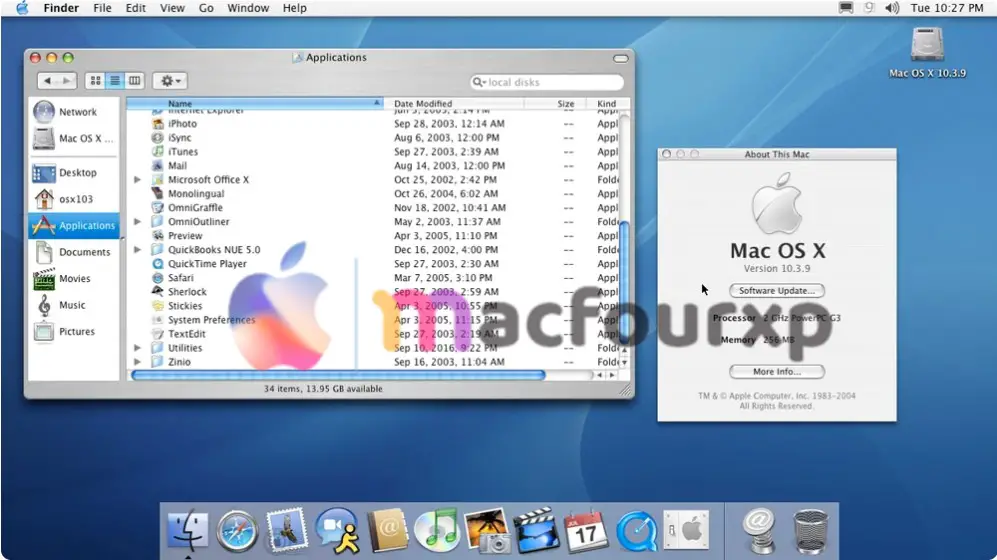
Features:
- Expose: Shifting of windows and choosing them dynamically with the use of live previews of these windows.
- FileVault: Provided for home folder encryption to secure data within.
- Safari Browser: A web browser that was branded under Apple company was intro-fused.
Mac OS X Tiger (10.4) – April 29, 2005:
Description: One of Mac OS X Tiger’s key features was Spotlight, a fast, flexible search tool for finding files, emails, and documents. Also, mac OS Tiger introduced Dashboard widgets for things like weather and calculators so you can access them quickly.
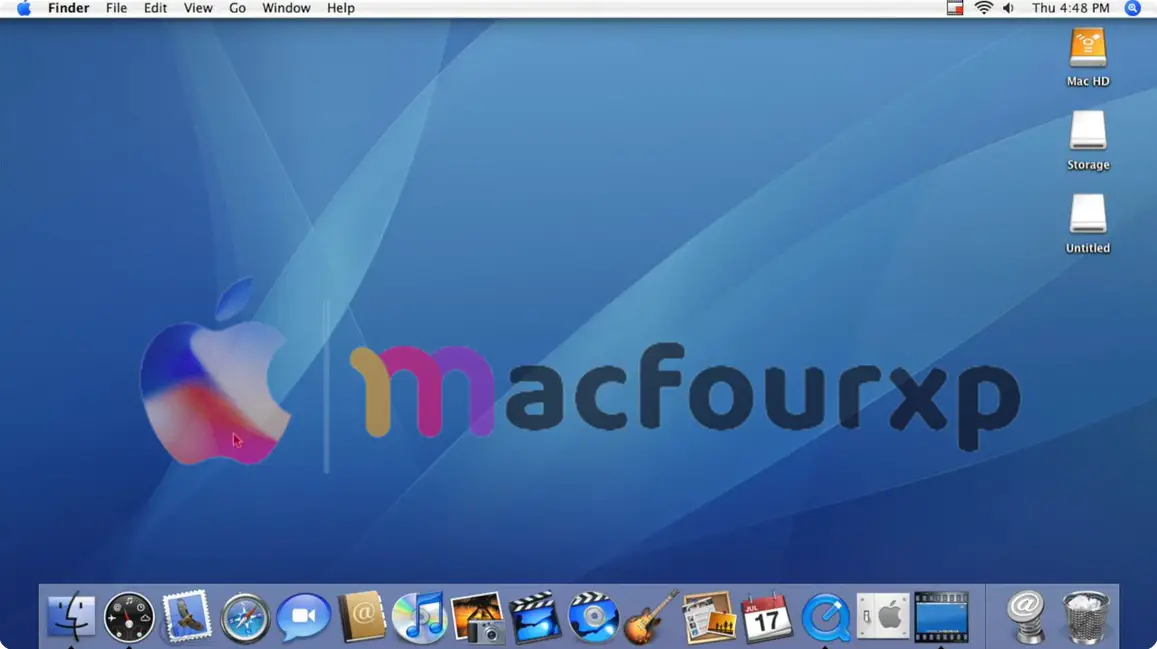
Features:
- Spotlight: A look’s or motion for a metal arched cutter solar market separately called wipe-nozzle concentrate and special effect.
- Dashboard: Small applications serving for information and utilities fast clear all including sold and serviced.
- Automator: A point click and add a moving operation to perform copy and other time wasting repetitive actions.
Mac OS X Leopard (10.5) – Oct 26, 2007
Description: A backup system was introduced (Called Time machine) with Mac OS X Leopard, which made restoring files easy by allowing users to create automatic backups.

Features:
- Time Machine: It is a systemizing back up and recovery operating system app.
- Boot Camp: Provided an environment in which Windows can be installed and executed on a Mac.
- Spaces: Virtual desktops to help in the organization of one’s workplace to enhance efficiency.
Mac OS X Snow Leopard (10.6) – August 28, 2009
Description: Mac OS Snow Leopard added support for running applications in full 64-bit architecture, providing a better application and system response. The OS is built on the two cores of Leopard and improved Time Machine and Finder applications in terms of speed and reliability.

Features:
- 64-bit Architecture: Capability of handling more levels from memory and improved performance levels.
- Grand Central Dispatch: Efficiency of multi-core processes was enhanced.
- OpenCL: Allowed developers to harness the power of the GPU for non-graphical programming tasks.
Mac OS X Lion (10.7) – July 20, 2011
Description: Mac OS X Lion OS added launcher out of the iOS which provided easy access to apps called Launchpad and Mission Control which allowed users to manage windows better by combining Expose Dashboard and Spaces.
Full-screen apps were also supported for better use of the display. It came with the Mac App store that made it easy to update and download applications.

Features:
- Mission Control: Integrated Exposé, Dashboard and Spaces under one roof.
- Launchpad: Application launch window developed for such inspired users as iOS who require quick access to applications.
- Full-Screen Apps: A setting was also available in which the application could be operated in fullscreen mode for the sake of tranquility.
Mac OS X Mountain Lion (10.8) – July 25, 2012
Description: Mac OS X Mountain Lion introduced a Notification Center that allowed users to check for news and other alerts from one location. It replaced iChat and bought Messages for Mac Messages for iOS. Power Nap also allowed you to update and backup your Mac while it is asleep. Mac users could get updates and back up files while they slept.

Features:
- Notification Center: A single interface for notifications.
- Messages: It has taken the place of the iChat and is compatible to the iMessage too.
- iCloud Integration: This allowed for easy syncing of data amongst all Apple devices.
Mac OS X Mavericks (10.9) – October 22, 2013
Description: Mavericks saw the company’s departure from traditional names to regions of the state of California being used in future versions of the operating system.
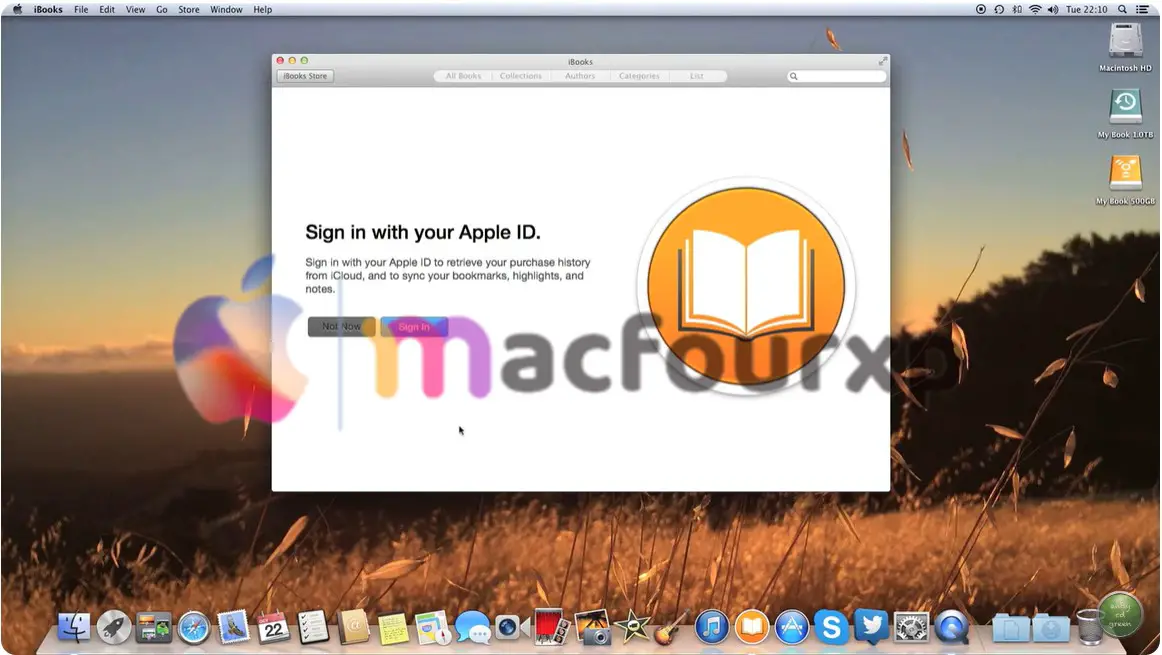
Features:
- Tab Browsing in Finder: A file management feature allowing operations in tabbed windows.
- Tags: Labels aimed at aiding file management.
- Energy Efficiency: It is power-on standby as an aim to enhance battery.
Mac OS X Yosemite (10.10) – October 16th 2014
Description: A completely new look was provided by Mac OS X Yosemite os as it allowed the individuals to access several devices like mac and iOS at a time with tasks like making calls and sending SMS through Mac.
Handoff feature was a blessing for users who would initiate work on a single device and seek to clutch it from a different gadget and continue the process frequently.
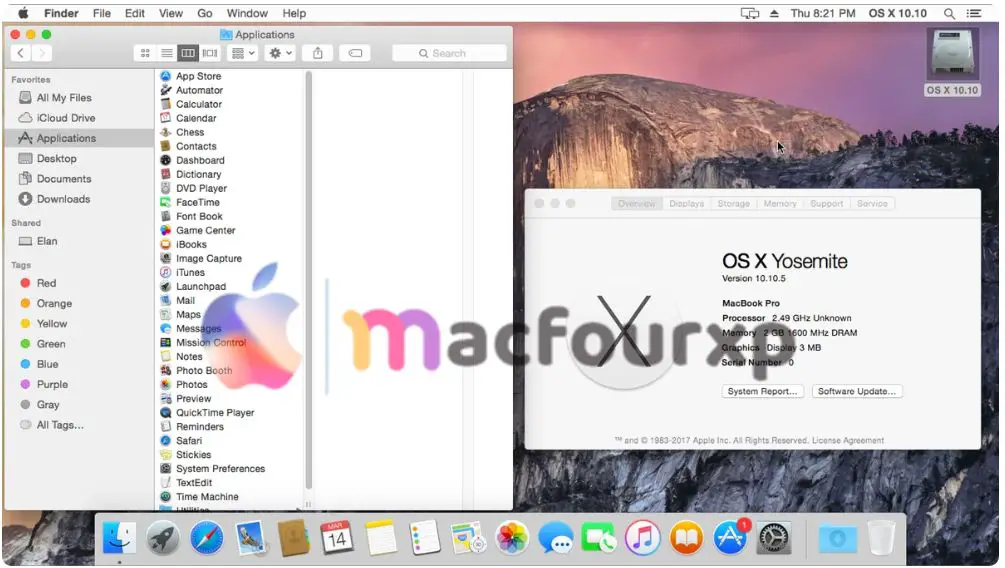
Features:
- Flat Design: An interface using the modern evocative sensibilities but the immersion comes with spatial layering.
- Handoff: Move the focus of whatever task we are performing from Mac that we are using to Mac or iOS.
- iCloud Drive: One place where all the files in the cloud can be kept and gets support on the Finder application, Apple portable computer Macintosh and PC users can access their Mac computers via the internet.
Mac OS X El Capitan 10.11 – Sep 30, 2015
Description: Because of its enhanced performance and user-friendly features, Mac OS X El Capitan is a great operating system. It added features like Split View, which lets you work with two apps at the same time.
In addition to improving system performance, El Capitan made apps run faster, especially on older Macs. Malware protection features like System Integrity Protection added another layer of defense.

Features:
- Split View: Two applications can be operated simultaneously in Split View mode, each in full screen.
- Metal for Mac: Leveraging the Metal API offered by Apple to enhance the graphics capabilities of the device.
- Mission Control Enhancements: Easier handling of the currently running application’s windows.
macOS Sierra (10.12) – Sep 20, 2016
Description: Sierra was the Rescue X OS W namesake as OS X was reborn as macOS and some features that came in were always meant to serve the apple environment.
Mac OS High Siera introduced Siri which enabled users to be able to voice search rather than solely depend on mouse clicks for example searching files, reminders and many more. Also.
do not forget to inform Mac users about the universal copy & paste feature, which was now available on iOS devices. The feature of iCloud Drive in mac OS Sierra to dump unnecessary files to the cloud made it simple to reduce storage space.
With features like Apple Pay for online purchases and Administrative convenience bolstered with Auto Unlock via Apple Watch.

Features:
- Siri on Mac: Apple’s virtual assistant can now be found on the macos operating system.
- Apple Pay on the Web: Made payments over the web via the macsafe application.
- Optimized Storage: Automatically freeing up space by moving inactive files to iCloud.
macOS High Sierra (10.13) – Sep 25, 2017
Description: On Mac OS High Sierra 10.13 os, the main improvement was the inclusion of the new Apple File System (APFS), which has replaced the older HFS+ system and provided more efficient file handling, better security, and more reliable files. Mac OS High Sierra 10.13 also added support for the new High-Efficiency Video Coding (HEVC), codec that allows better video encoding and decoding.

Features:
- Apple File Systems (APFS) – New Multithreaded, very safe and written inherently flash storage management family with quick file system operations.
- Support for HEVC – this led to delivering better quality videos with smaller sizes than h264.
- Metal 2: includes graphics processing unit devices and software support for creating and editing of VR content.
macOS Mojave (10.14) – Sep 24, 2018
Description: The major highlights of the macOS Mojave operating systems were the Dark Modes functionality that allowed to have a dark-suited comfortable environment for dark desktops.
The innovative Dynamic Desktop feature offered users a variety of wallpapers, changing them throughout the day, and this significantly increased the level of comfort for the users.

Features:
- Dark Mode: Accessible macos mode which applies a dark color scheme to all interface and to eradicate end user light concentration problems.
- Stacks: Elimination of the graphic user interface disorder on desktops by collating loose files into stack sorts.
- Dynamic Desktop: the desktop wallpaper is changed according to the different times of a day.
macOS Catalina (10.15) – Oct 7, 2019
Description: There are a lot of great stuff in Mac OS Catalina, including improved functionality and security. iTunes has been replaced with apps for Music, Podcasts, and TV, so things are more streamlined. Catalina also introduced Sidecar, which lets you extend your Mac display to an iPad, so you can multitask.
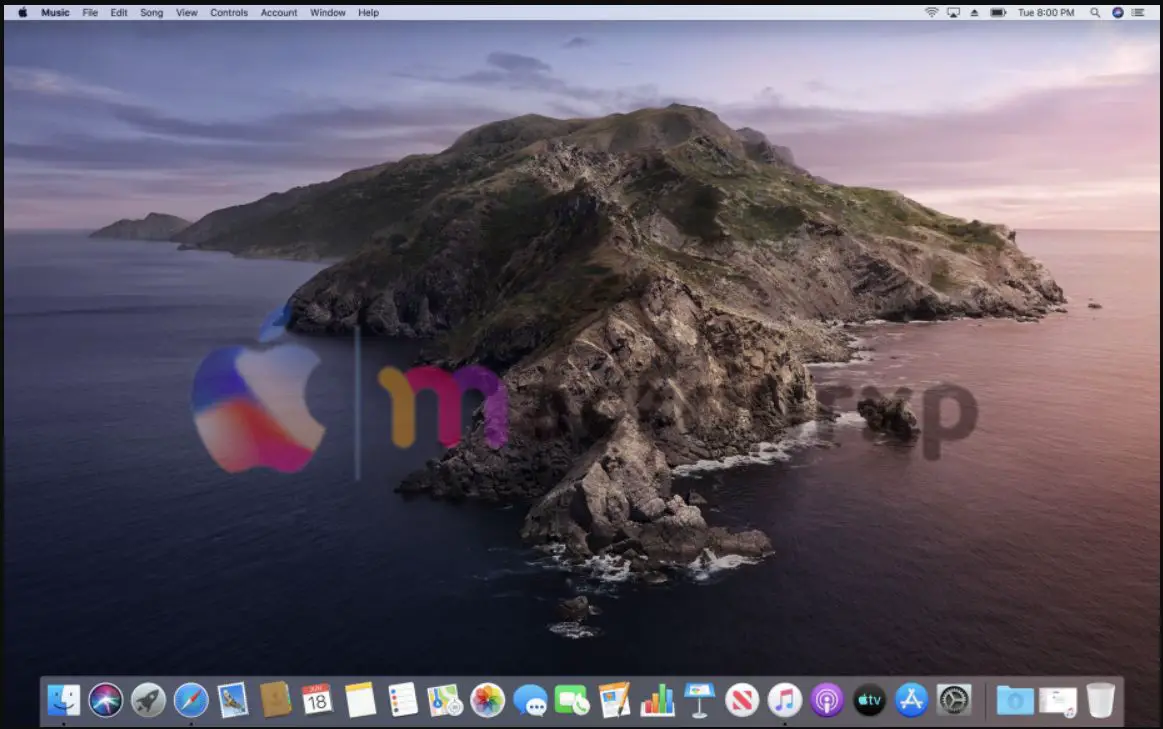
Features:
- Sidecar: Use an iPad to expand the displays of your Mac and use as the second screen.
- Screen Time: Keep track of and limit the usage of Apple devices on other Apple devices as well.
- Enhanced Security: There are much stricter rules with regards to accessing the files within certain folders and applications have to get clearance from the user before, they can access these sensitive folders.
macOS Big Sur 11 – November 12, 2020
Description: In Big Sur, icons were revamped, menus were transparent, and settings were easier to access. It was the first macOS to support Apple’s M1 chip, which improved performance and efficiency. It also added improved privacy features, like app tracking transparency, and a faster, more secure Safari browser.

Features:
- Revamped Interface: Innovative appearance with new status symbols, an updated control panel and other components, redesigned widgets.
- Safari Improvements: Faster speeds, enhanced protective and privacy features, custom start pages.
- M1 Chip Optimization: Full support of Apple’s silicon chips conservatively speaking wowed many as this concept itself hints with massive implications towards performance.
macOS Monterey 12 – Oct 25, 2021
Description: In macOS Monterey, users can use one keyboard and mouse across all their Apple devices, including Macs and iPads. SharePlay lets you share media in real time during FaceTime calls.

Features:
- Universal Control: With the single set of mouse and keyboard, multiple devices of apple can be accessed.
- AirPlay to Mac: Content from an Apple phone or Apple tablet can be played on Apple personal computer.
- Focus Mode: Create specific notification profiles that helps them to focus better.
macOS Ventura 13 – Oct 24, 2022
Description: With macOS 13 Ventura’s focus on multitasking and connectivity, the software support spans over different Apple devices, preserving users’ workflows.

Features:
- Continuity Camera: Makes it possible to use iPhone as a Mac’s webcam of good quality.
- Enhanced Mail: Users can better manage emails with features like search, send, scheduled send, undo send, and others.
macOS Sonoma 14 – Sept 26, 2023
Description: Sonoma, also called macOS 14, includes many new features in order to increase productivity and gaming on the Macs.

Features:
- Game Mode: Enhances performance on systems while playing games.
- Safari Profiles: This feature provides a profile to be created to separate work and home browsing among others.
macOS Sequoia 15 – Expected in 2024
Description: The next macOS (Sequoia) is now under beta development and will be integrated with unique features of great importance most especially, artificial intelligence, privacy and user interface aspects.
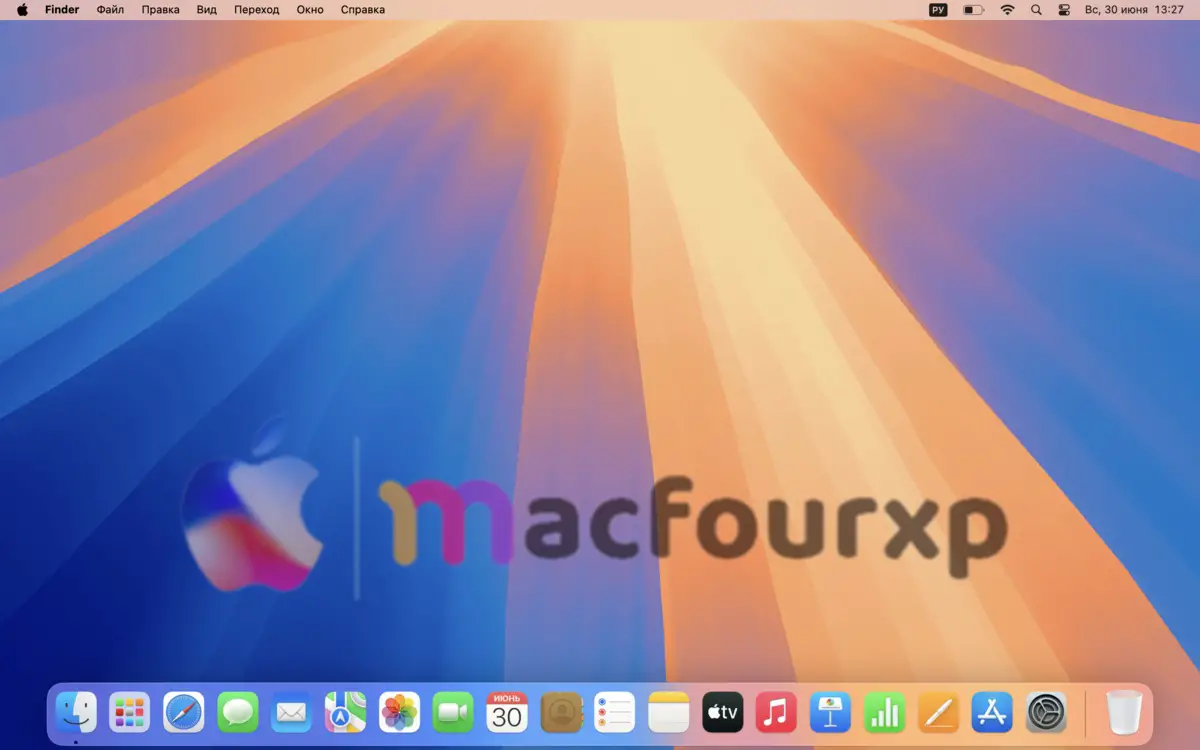
Expected Features:
- AI Tools: Cross-system advanced machine teaching assistance.
- Privacy Enhancements: New features that provide users with more options on how to manage their data.
- UI Refinements: Improvements to break down the usage of the issued product even further for the interface with the users.
Final Thoughts
So in this list we have added all the complete list of macOS versions with year released. If any macOS is released in the future then we will definitely add that model to this list.
NEXT READ THIS :
List of iPhones From 2007 to 2024 in Order (UPDATED…)



